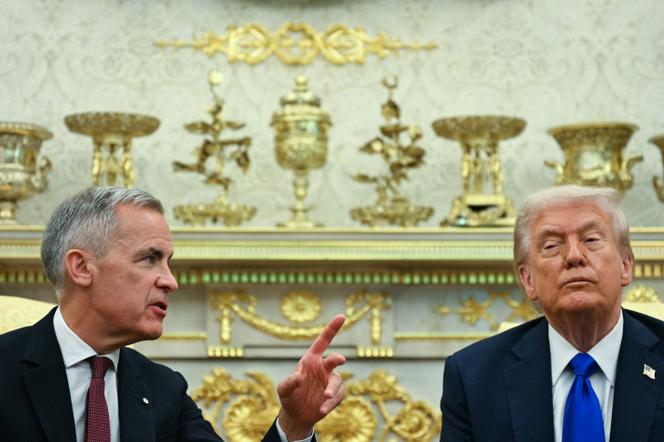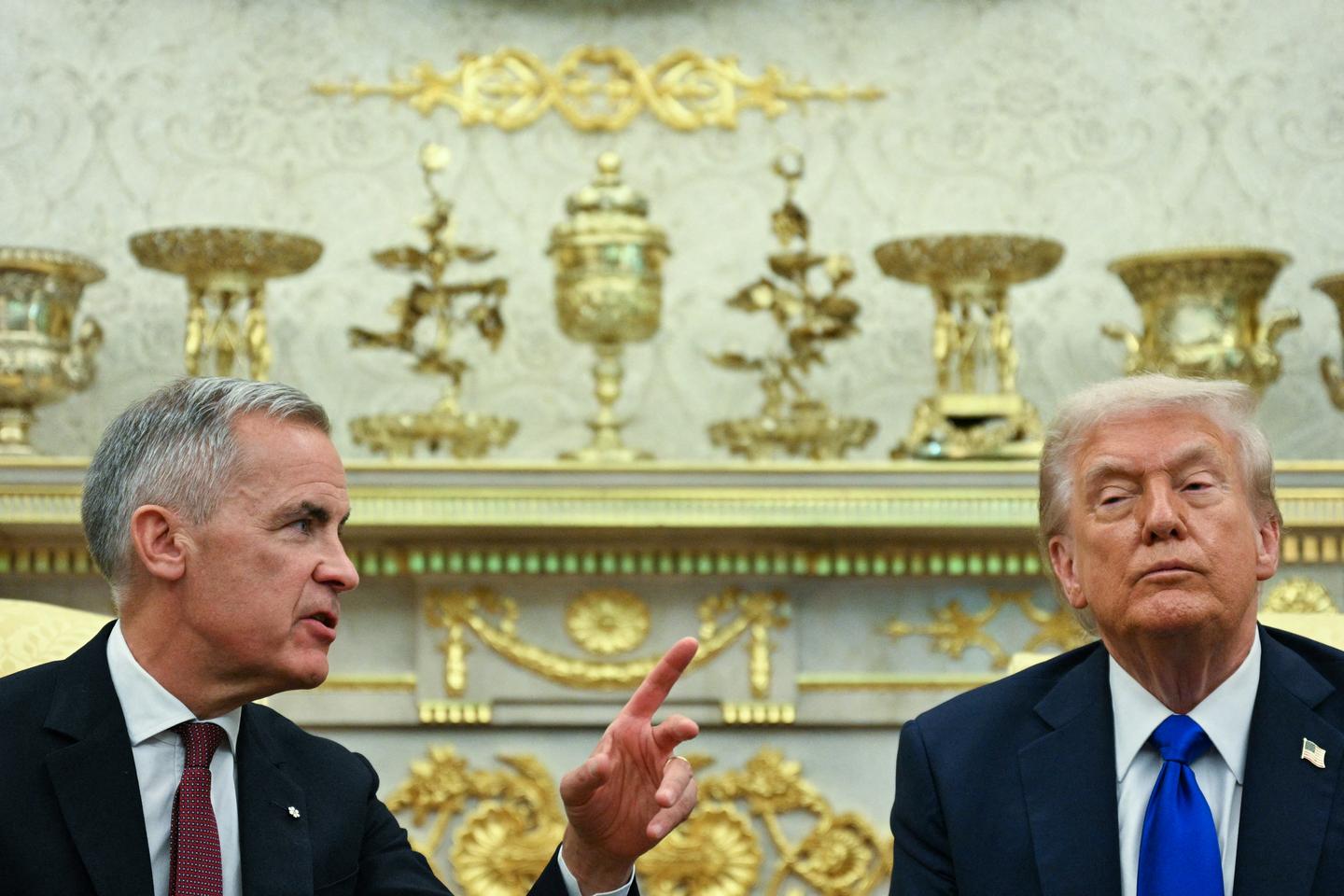 Canadian Prime Minister Mark Carney and US President Donald Trump in the Oval Office of the White House, Washington, October 7, 2025. JIM WATSON / AFP
Canadian Prime Minister Mark Carney and US President Donald Trump in the Oval Office of the White House, Washington, October 7, 2025. JIM WATSON / AFP
On the banks of the St. Lawrence River, just a few dozen kilometers from Montreal, excavators and workers bustled on a construction site that began at the end of September. Here in Contrecœur, a peaceful Quebec municipality of 10,000 residents, a massive container terminal is set to be built by 2030.
On the drawing board since the late 1980s, the project received a major boost in September. After decades of inaction, the federal government designated it as one of its 10th “priority national interest projects.” Ottawa created this list in response to the trade war declared by the United States. This wide-ranging infrastructure plan, adopted in June under the “C-5” law, was declared an “absolute priority” by Prime Minister Mark Carney. The initiative aimed to inject fresh momentum into the Canadian economy and, above all, to ensure greater autonomy from its southern neighbor.
In practice, the law granted the government expanded powers to speed up the approval process for major projects and bypass certain regulations, notably environmental ones. Among Ottawa’s targets were, for example, a copper mine in the Canadian Prairies, a small nuclear reactor in Ontario, and a liquefied natural gas export terminal on the west coast in British Columbia. At the heart of the St. Lawrence River – Canada’s economic corridor – the future Contrecœur terminal symbolized this new ambitious economic policy. Once completed, the terminal could handle up to 1.5 million containers per year, increasing the capacity of the upstream Port of Montreal by 60%.
You have 72.96% of this article left to read. The rest is for subscribers only.

